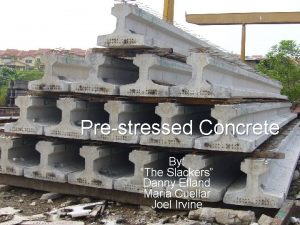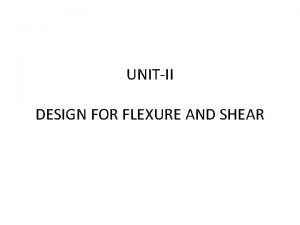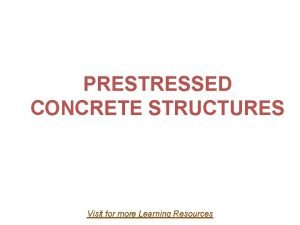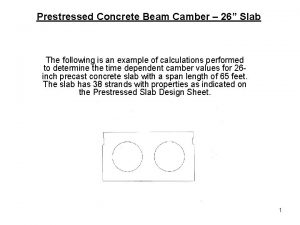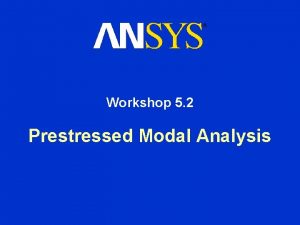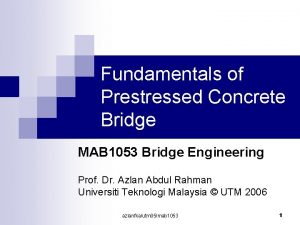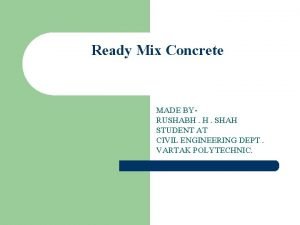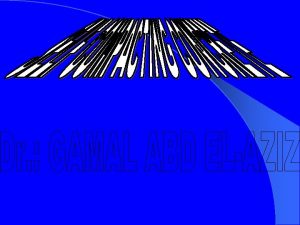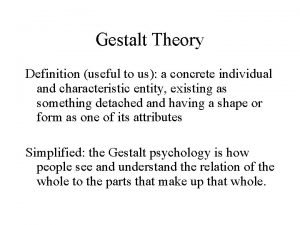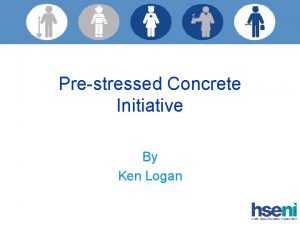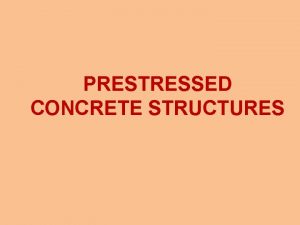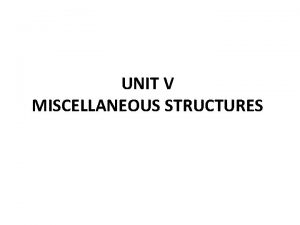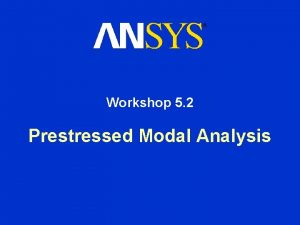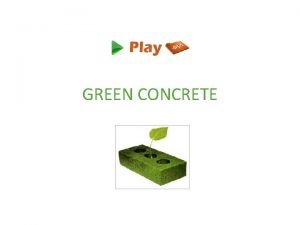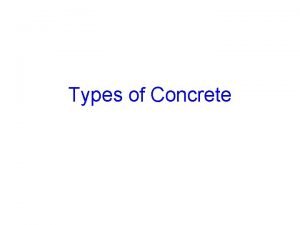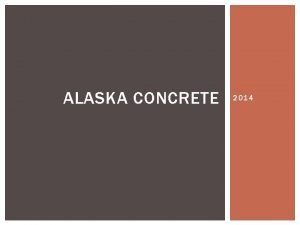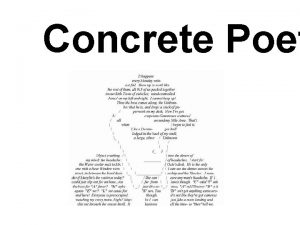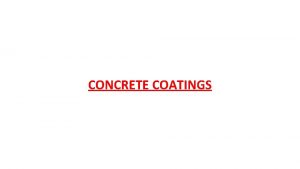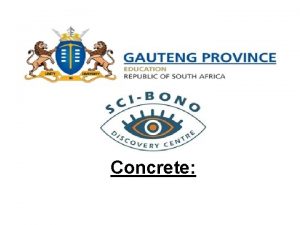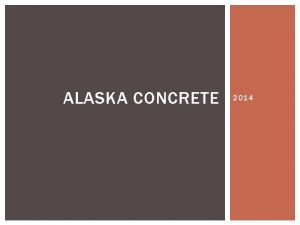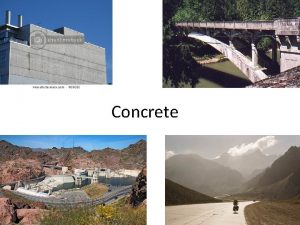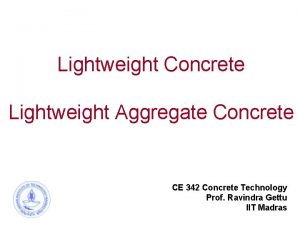Prestressed Concrete What is Prestressed Concrete Definition Prestressed















- Slides: 15

Pre-stressed Concrete. .

What is Prestressed Concrete? Definition: • “Pre-stressed concrete is a form of reinforced concrete that builds in compressive stresses during construction to oppose those found when in use. ” In other words it is a combination of steel and concrete that takes advantages of the strengths of each material. . .

3 Main Types of Internal Prestressed Concrete Pre-Tension Concrete: pre-stressing steel is tension stressed prior to the placement of the concrete and unloaded after concrete has harden to required strength. Bonded post-tensioned concrete: unstressed prestressing steel is placed with in the concrete and then tension stressed after concrete has harden to required strength Un-bonded post-tensioned concrete: differs from bonded post-tensioning by providing the prestressing steel permanent freedom of movement relative to the concrete.

Pre-tensioned Concrete Pre-tensioned concrete is when the steel reinforcement is stressed prior to concrete being placed around the steel.

Advantages of Pretension is the easiest controlled of the bonded stressings with the least chance of error in the bonding process. Tension caused by the steel is spread throughout the length of the concrete since it is bonded within the concrete along the length of the member.

Concerns With Pre-tension Usually uses a mould which is able to resist the forces within the tendons. Which are more expensive than regular moulds. Exception comes when the sides of the mold our anchored allowing mold to be created between the anchors without supporting stress.

Bonded Post-tensioned Concrete Process • Concrete is casted around a curved duct (usually corrugated), to allow room for the Tendon to be inserted. • After the concrete has hardened the tendons are pulled in tension and then wedged. • The duct is then injected with gout

Bonded Post-tensioned Concrete Advantages • Tendons are less likely to de-stress in accidents • Tendons can be easily 'weaved' allowing more efficient designs • Higher ultimate strength due to bond generated between the strand concrete • No issues with maintaining the anchor

Un-bonded Post-Tension In post-tensioning, the steel in the concrete is stretched after the curing process. un-bonded provides tendons freedom of movement by coating each tendon with grease and covering it with a plastic sheathing

Un-bonded Post-Tension

Why Un-bonded? Advantages • Post-stress grouting is eliminated • Ability to de-stress the tendons • Economical • Replaceable • Simple stressing equipment

Prestressing Steel (High Strength steel) Forms • • • Wires Strands Tendons Cables Bars • • Mechanical Hydraulic Electrical Chemical Source of Force

Why Prestressed Concrete? Concrete remains un-cracked Reduction of steel corrosion Increases durability Good for pressure vessels High span to depth ratio (ex: 45: 1 vs. 28: 1) less dead load More economical

References www. todaysconcretetechnology. com www. utexas. edu www. dywidag-systems. com www. enotes. com www. tech 9. com Indian Institute of Technology Madras “Prestressed Concrete Structures”

QUESTIONS?
 Prestressed concrete definition
Prestressed concrete definition Steel wire rope pc strand
Steel wire rope pc strand Design for flexure
Design for flexure Prestressed concrete is osha
Prestressed concrete is osha Camber in concrete slab
Camber in concrete slab Prestressed modal analysis ansys
Prestressed modal analysis ansys In class 1 prestressed bridge
In class 1 prestressed bridge Informal inventory
Informal inventory Concrete semi concrete abstract
Concrete semi concrete abstract Whats a concrete poem
Whats a concrete poem Properties of rcc
Properties of rcc Ready mix concrete definition
Ready mix concrete definition Maturity concrete definition
Maturity concrete definition What are three major types of concrete details
What are three major types of concrete details Self compacting concrete definition
Self compacting concrete definition Characteristics of schema theory
Characteristics of schema theory
